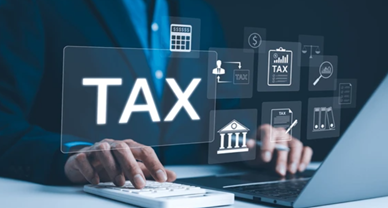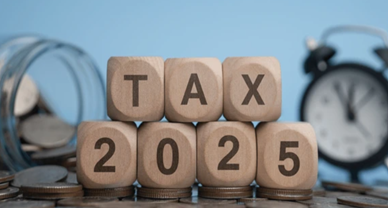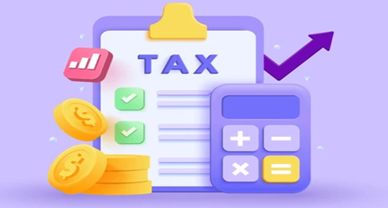India’s Global Digital Taxation and Equalization Levy
Today, a technology business can serve millions of consumers across a country without having a single physical location. They conduct transactions, sell adverts, broadcast content, and collect personal information without the need for a physical presence something that would have been considered inconceivable just 20 years ago. In contrast, taxes frameworks stayed mostly unaltered while firms developed.
Because of this imbalance, India enacted the Equalization Levy, which aims to tax global digital titans such as Google, Facebook, and Amazon. In my initial reading of this taxation, it appeared that India was taking a stand which developing countries had been hesitant to take for so long. However, sustaining tax sovereignty is not as straightforward. As I went deeper, I became lost in a complex maze of one-way operation, global diplomacy, and escalating opposition between practicality and equity. The blog goes beyond the Equalization Levy to discuss its context, position in the broader global tax reform agenda, and future sustainability.
I have always found it interesting that, while India is expected to participate in global trade and business, developed countries are the ones that enact laws, particularly tax legislation.
The Equalization Levy was India’s version of “our patience has run out.” It was introduced in 2016. The first law addressed online advertising services. The real change went into effect in 2020. Foreign digital enterprises who provide e-commerce services to Indian consumers were unexpectedly slammed with a 2% tax on their sales, despite having no presence in India.
It seems fair. Why can’t some of the money I pay Netflix monthly as a consumer be taxed in India?
Sometimes justice does not follow what the law requires, or even what is attainable.
What triggered criticism was the fact that the fee was based on income rather than profit. Even if a firm does not benefit from its operations in India, it must pay taxes. International firms have rightly hated this, as it contradicts the fundamentals of corporate taxation.
In some ways, it would be like paying twice. Assume an American-based software company pays corporation tax in its home nation as well as duty in India for the same transaction, and the two taxes cannot be offset.

The American government claims that it is “discriminatory.” It does, in fact, disproportionately harm American enterprises; so, their complaint is well-founded. From an Indian standpoint, this is about safeguarding the nation’s tax base and arguing that digital wealth created in India must be subject to Indian taxes.
Both are accurate in my perspective. This is rather a philosophical thesis. In the digital age, the question of who gets to tax value has arisen.
Securing a worldwide consensus solution through the OECD resulted in the Two-Pillar Solution phrase, while India took unilateral action.
- Pillar One: Market jurisdictions such as India may have the right to tax.
- Pillar Two proposes a 15% company tax rate that applies internationally.
It’s ideal on paper. There will be a 15% tax on everyone, and countries will not be required to do anything.
What we have here is a problem with implementation. It has moved slowly, and nations like India cannot afford to wait any longer because their digital businesses are still growing and causing losses for the government.
I believe India’s wrath is reasonable, especially now, with deadlines continuously changing and legal structures still inadequate. However, the longer India continues to implement the Equalization Levy, the higher the risk that it will become an issue rather than a solution.
Notably, India has not rejected the OECD framework. It has theoretically committed to abolishing the Equalization Levy, but only if Pillar One is operational. This is a suitable transitional position. It is sensible and strategic.
In 2021, India and the United States reached another agreement to keep the Levy in place while waiving retaliatory duties. What has been witnessed is as close to a compromise as is possible in international tax politics on this subject.
I who does not know much about taxation law, am torn by two opposing impulses: I respect India’s faith, yet unilateralism can rapidly devolve into legal confusion and trade warfare.
Is India expected to eliminate the Equalization Levy in the name of world peace, or should it continue to defend its tax base regardless of diplomatic consequences?
This problem does not, in my opinion, have a simple solution. But I do know that the digital economy is here to stay, and that countries like India should have a vote in how tax laws are drafted. They must be treated as equals rather than just parties.
India’s transition to digital levies is more than just numbers; it is about shifting economic control in a linked world. The Equalization Levy might be flawed. It could be of a temporary nature. But it has sparked a long-overdue worldwide conversation.
As lawyers, politicians, and taxpayers, we must confront the more difficult questions: who should be permitted to pay taxes? What is correct in an economy without borders? How can local interests be reconciled with global cooperation?
The questions are doing more than just circulating among academic circles. They are ahead of schedule on today’s legal agenda, and in this issue, India did not wait for someone to tell the world how to respond. It did something. Now, the globe is fighting to stay up.
Author:–Jayant Bhardwaj, in case of any queries please contact/write back to us at support@ipandlegalfilings.com or IP & Legal Filing.
REFERENCES:
- OECD (2023). Two-Pillar Solution to Address the Tax Challenges Arising from the Digitalisation of the Economy.
- Economic Times & Business Standard reporting on OECD negotiations and India-US compromise (2023–24)
- Nishith Desai Associates (2022), India’s Equalisation Levy 2.0: Taxing the Digital Economy
- PwC India, “Equalisation Levy 2.0: FAQs and Commentary” (2021)
- Business Standard, “Equalisation Levy remains until global tax pact operational: India” (Oct 2022)


